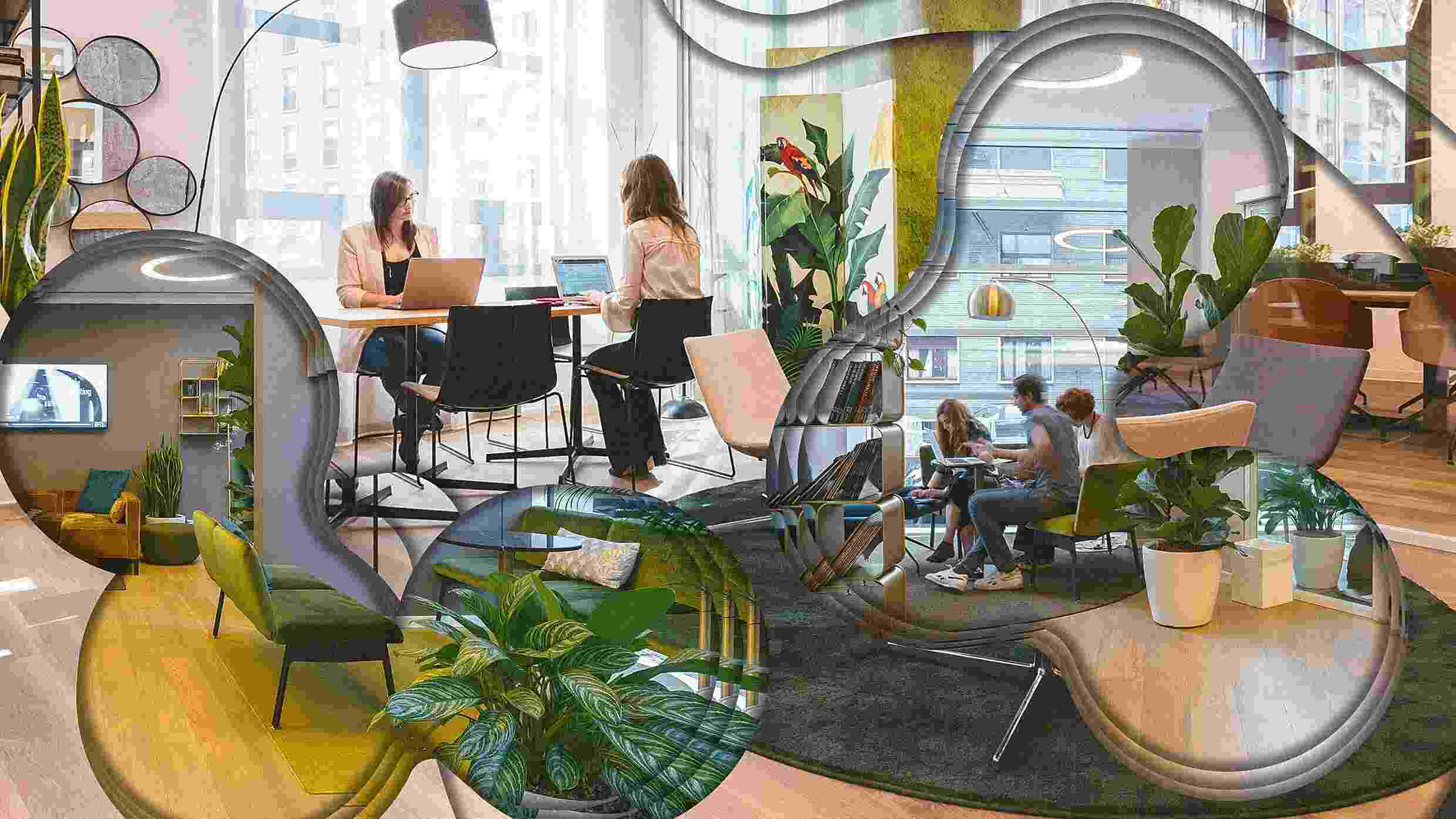- | 8:00 am
The office is entering its lounge era
Goodbye workstations and meeting rooms. Data shows that offices are becoming less office-y.

Private offices, chairs, desks, and conference rooms: Traditionally those would have been the ingredients for a typical office design. But according to a new report from WeWork, those quintessential elements are falling by the wayside in 2024. Demand for private offices, private meeting rooms, and conventional workstations is falling. Replacing them is a growing demand for informal spaces that look and feel more like a lounge than a buttoned-up corporate workplace.
Based on user surveys and qualitative data from roughly 3,000 design-related requests from customers, WeWork’s first design report offers a window into the evolving state of the office today. For the foreseeable future, it’s more likely to be furnished with couches, café seats, and lounge chairs than cubicle panels and desks.
The data shows an 80% drop in requests for executive offices from 2018 to 2022. Requests for pantry space and communal areas have doubled since 2021. Between 26% and 35% of all available chair-and-table setups, or “work points,” are informal settings that can also function as places to catch up with coworkers, socialize, or have impromptu meetings. The old model of a room full of desks and chairs isn’t exactly dead, but it’s definitely not in vogue.
Blame or credit the pandemic, says Ebbie Wisecarver, WeWork’s chief design officer. The experience of working from home was, for many, a kind of gateway drug for being productive in unconventional settings, whether in a home office, at a kitchen table, or on a lumpy couch.
“I think a lot of people just realized that they can actually do work there, and felt like that was acceptable,” Wisecarver says. “In some ways I feel like the office post-COVID is a less formal environment.”
That’s turning more of WeWork’s coworking spaces—and the larger office suites and floors it designs and builds for what it terms its enterprise clients—into environments that recall living rooms or hotel lobbies.
Wisecarver says that many workers’ attitudes and behaviors have shifted as they return to the office in the wake of the pandemic. “You saw people gravitating towards each other in the lounge. This idea of having my own private space became less interesting because you had so much of that at home. You didn’t necessarily come into the office to segment yourself into your own office,” she says.
WeWork’s design report highlights a growing demand for what Wisecarver calls “elastic” design, with spaces that can do double or triple duty depending on the needs of workers or companies. That’s reflected in more requests for spaces that can handle, for example, a small group meeting and then be opened up for a town hall, or a room that can be used for training in the morning and a group lunch in the afternoon. Accommodating these flexible rooms is often possible because these same companies want less space for private offices.
“There’s a huge advantage for a company to be able to reposition their strategy,” Wisecarver says. “One thing that I think is important for a lot of these companies is they can shape-shift according to those needs.”
That’s even being applied to the lounge space that is in such high demand these days. It’s not just a room full of couches, but can encompass a wide spectrum of informal settings that range from more social to more reserved.
“One trend we’ve seen is carving out quiet space within a lounge,” Wisecarver says, comparing the idea to the quiet car on a train. “It’s still adjacent but there’s a behavioral change. Now it’s less that the lounge means loud, or the lounge means noisy. It doesn’t have to be just food. You can actually sit there and do your work.”





































